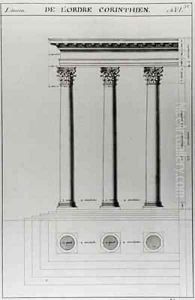Antoine Babuty Desgodets Paintings
Antoine Babuty Desgodets, born in 1653, was an eminent French architect and architectural draughtsman, well known for his accurate drawings of ancient Roman buildings. His works are particularly valuable for the study of Roman architecture as they provide precise documentation of the buildings' conditions during his time.
Desgodets was a student at the French Academy in Rome, which was an essential institution for the training of French artists and architects. It was during his time in Rome that he produced one of his most significant works, 'Les Edifices Antiques de Rome' (The Ancient Buildings of Rome), first published in 1682. This work, commissioned by the French Academy, consisted of a comprehensive set of engravings that meticulously documented the details of ancient Roman architecture. The accuracy of Desgodets's drawings made them a crucial reference for architects and scholars interested in the classical style and helped to disseminate the principles of Roman architecture throughout Europe.
Beyond just an artist, Desgodets was also an academic. In 1699, he was appointed as a professor of architecture at the Royal Academy of Architecture in Paris, a position he held until his death in 1728. His teachings and writings influenced the development of French architecture, particularly in the classical tradition, and he played a significant role in the academic discourse of the time.
Desgodets's legacy is largely tied to his scrupulous documentation of Roman buildings, which has been a source of inspiration and knowledge for architects and historians over the centuries. His work remains an important resource for understanding the classical orders and the architectural heritage of Rome, and his influence can be seen in the works of subsequent architects who were guided by his detailed studies. Desgodets died in 1728, leaving behind a rich legacy as both an architect and an educator.
